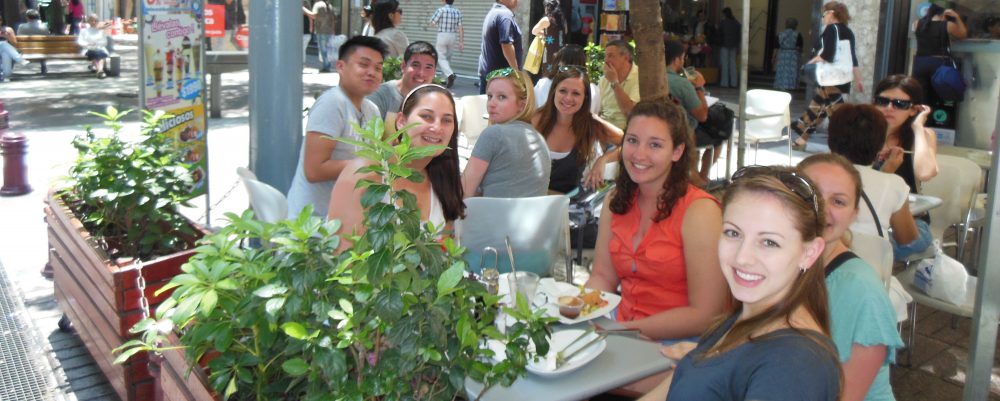On the Monday before we left Chile, we spent the day in Valparaiso, a coastal city about 2.5 hours from Santiago. The city is made up of many steep hills and valleys, much like San Francisco. Even here, there was definite evidence between the rich and the poor. Some homes had eccentric architecture, built on top of the hills overlooking the water. Others were more noticeably poor, with rusty tin roofs and walls made from mismatched wood. Graffiti was everywhere, though much of it was actually quite beautiful.
Professor King had downloaded a book on her kindle that gave a step by step (no pun intended) tour of ‘Valpo,’ complete with anecdotes about the historical buildings and landmarks. We walked around the city, admiring the landscape, architecture, and view of the ocean. One of the unique hallmarks of Valpo is the sight of funiculars going up and down the side of the steep hills. Funiculars are railways on which rides a small wooden boxcar that can fit around 10 people. This wooden car moves along the railway, up and down the hills, giving peoples’ legs a break but still allowing them to reach their destination. The funicular we went on was at about a 60 degree angle and very old looking (yikes!), but gave us a beautiful view of the city as it went up the side of the hill.
As we walked around the city, Professor King told us a brief history of Valpo. In the 1500’s and 1600’s, Valparaiso (meaning Paradise Valley) was the site of the Chilean navy. Later, still before the Panama Canal was built, Valparaiso was an essential stop for food and water for large boats rounding Cape Horn. Currently, it functions both as an important seaport and tourist destination.
Valparaiso definitely rivals the other places we saw in Chile in terms of beauty and charm. My only complaint? That we did not have enough time to see everything the city has to offer!
